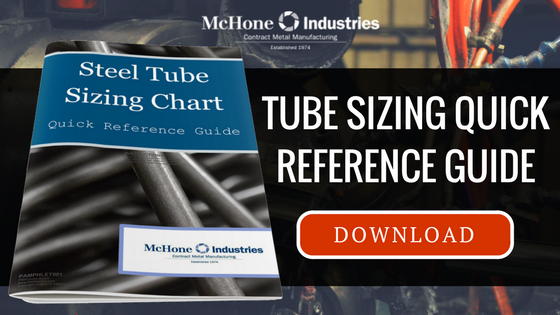Photo courtesy Zero Decibel Motorsports
You know aluminum. You love aluminum. It’s your brain’s automatic go-to when you start an engineering project and need materials. But is aluminum tubing really the best option for your application?
Depending on what you’re trying to accomplish, the answer’s yes -- or no.
Aluminium's rare combination of flexibility, strength, and lightness (It’s about ⅓ the weight of steel!) make it attractive for a variety of applications. Its flexibility makes it resistant to cracking.
General Rules for Applying Aluminum Tubing
Here are some basic considerations for using aluminum tubing:
1. Tubing Doesn’t = Piping
Don’t forget that tubing is not the same thing as piping. Tubing offers more structural benefits; piping is largely for fluid transport.
2. How Much Do You Need, and Can You Afford It?
There are cheaper options by base cost than aluminum tubing, BUT since it’s lighter you’ll get more aluminum for the price by total volume. Certain applications will be more cost-efficient than others. If aluminum doesn’t prove to be worth the investment, stainless steel might be a safer pick.
3. Will My Product Be Visible?
Aluminum is superior to carbon steel for aesthetic applications because of its shine. Just remember it’s not as long lasting as stainless steel, so you could have some corrosion to address.
4. Weight Matters
Some products simply have to be transportable. For example, you don’t want to sell patio furniture that’s impossible to move because it weighs a half-ton. Aluminum’s an easy fix for this dilemma.
5. What About Recycling?
If your product is intended to be disposable rather than long-lasting, it’s great to use material that’s recyclable. Using aluminum rather than plastic keeps your environmental footprint small.
Great Uses for Aluminum Tubing
 Many industries and product types are great for aluminum tubing:
Many industries and product types are great for aluminum tubing:
1. Heat Exchangers, Etc.
Aluminum is a strong heat conductor. The 1000 series of aluminum alloys are the best of the bunch in that category.
Tubing is often what moves heat from one place to another. Aluminum tubing is used in:
- Engines
- Refrigerators
- Air conditioning and heating systems
- Ventilation
- Solar power
- Steam generators
- Reboilers
2. Transportation (Including Aerospace!)
Aluminum tubing’s versatility is ideal for well suited for automotive, aerospace, and rail transportation duties, all of which require strong, yet lightweight, components. Examples include:
- Fuselage
- Railing
- Bus conductors
- Fuel lines
- Hydraulic systems
- Frames
3. Structural and Roadside Supplements
You’ll see a lot of government-contracted work with aluminum on highways, including guardrails and signs. Other uses include:
- Architectural trim
- Handrails
- Fencing
- Outdoor structures
- Framing and supports
4. Many Others
There’s too much to list here, but we’ll try:
- Electronics
- Medical and health care products
- Fittings and fasteners (safety barriers and store fixtures)
- Pressure vessels (think fire extinguishers, submarines, refineries, storage tanks)
Beware Aluminum When …
The metal gods didn’t make aluminum for every application. Watch yourself if your tubing-based project fills one of these criteria:
1. Structural
“But you just listed that among the positives!” you probably just cried out. Hear us out.
For aluminum to be an acceptable construction material -- meaning its task will be to hold heavy stuff up -- it needs to be mixed with other metals. When mixed in appropriate portions, aluminium’s strength can actually equal steel’s without sacrificing its weight advantage. Engineers often use aluminium alloys in components where low weight or high corrosion resistance is a must.
2. You Can’t Take the Heat
If you don’t want conductivity in your tubing, run the other way. Sometimes heat is a bad thing.
3. The Rough Stuff
Aluminum will wilt (not literally, but you get the point) under high-stress or highly corrosive environments. There are more durable metals out there.
Get It Right or Pay the Price
Aluminum tubing has many benefits. If your project fits the bill, good for you. Now it’s on you to more sure you specify sizing and bending properly to help your manufacturer put out the best and more cost-efficient product imaginable. Your company -- and its bottom line -- will thank you!


